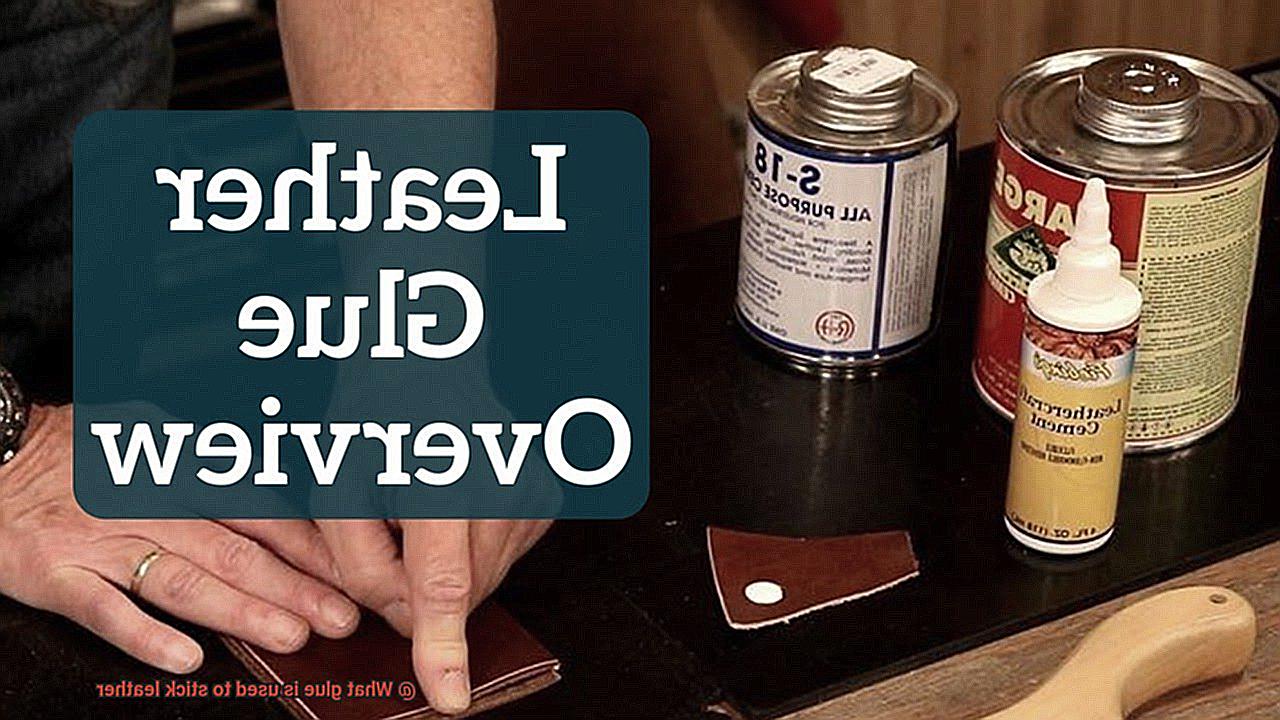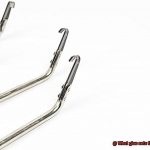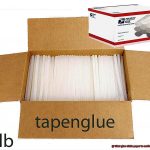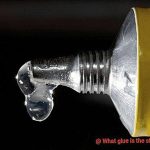You’ve got a leather project on your hands. Maybe it’s a worn-out wallet that needs some TLC or a DIY leather accessory that’s just waiting to be born. Whatever the case, finding the right glue is key to ensuring your masterpiece sticks together like magic.
In this handy guide, we’re diving deep into the world of glues for leather. We’ll explore the pros and cons of each type, from the classics that have stood the test of time to the new kids on the block. By the end, you’ll be armed with all the knowledge you need to make an informed decision and achieve professional results.
Contact Cement:
Contents
- 1 Types of Adhesives for Leather Bonding
- 2 Contact Cement: A Strong and Fast-Drying Adhesive
- 3 Epoxy Adhesive: A Two-Part Bonding Solution
- 4 Polyurethane Adhesive: Flexible and Durable Bonding Option
- 5 Specialty Glues for Leather Bonding
- 6 Factors to Consider When Choosing a Glue for Sticking Leather
- 7 Testing the Adhesive on a Small Area of the Leather
- 8 Conclusion
When it comes to sticking leather to leather, contact cement is where it’s at. This popular choice among leather crafters and hobbyists boasts super-strong bonding power, resistance to heat and humidity, and a flexible hold. Just remember, once those surfaces touch, there’s no going back – so apply with care.
Tips: Apply a thin layer of contact cement on both surfaces, wait until it feels tacky (patience is key here.), then press those pieces together firmly. For extra security, clamp your leather buddies for a few hours.
Epoxy:
If strength and durability are what you’re after, epoxy glue is your new best friend. It sticks like nobody’s business and works well on various surfaces – including leather. But beware: once cured, epoxy can be a bit rigid, so keep it in mind for projects that don’t need too much flexibility.
Tips: Mix equal parts of epoxy resin and hardener like a mad scientist. Then spread a thin layer on your leather piece before pressing them together firmly. Pro tip: use clamps or weights to keep everything in place while it cures.
Superglue (Cyanoacrylate):
When time is of the essence and you need a quick fix, superglue to the rescue. This fast-drying adhesive is perfect for those emergency leather repairs. It’s got serious strength and will bond your leather like there’s no tomorrow. Just be careful – it can get a bit messy and hard to control.
Tips: Apply a small amount of superglue to one surface, press those pieces together, and hold on tight for a few seconds until it sets. But remember, less is more – don’t go overboard with the glue or risk leaving behind
Types of Adhesives for Leather Bonding
When it comes to bonding leather, selecting the perfect adhesive is essential for achieving a strong and long-lasting bond. With numerous options available, finding the right glue can be overwhelming. In this article, we will explore different types of adhesives commonly used for leather bonding and help you make an informed decision based on your specific needs.
Contact Cement: The Powerhouse Bond
For a reliable adhesive that delivers a powerful punch, contact cement is the go-to choice. This adhesive creates a permanent bond when two surfaces are pressed together. Its exceptional adhesion and flexibility make it ideal for leather projects such as shoe repairs or upholstery. To ensure a solid bond, apply contact cement to both surfaces, allow it to dry until tacky, and then firmly press them together.
Epoxy Adhesive: Unbreakable Strength
When strength and durability are of utmost importance, epoxy adhesive is your secret weapon. Consisting of two parts – resin and hardener – epoxy creates a bond that can withstand high temperatures, chemicals, and moisture. It is perfect for bonding leather to metal or wood, making it an excellent choice for jewelry-making or furniture repair.
Polyurethane Adhesive: Flexibility at Its Finest
If you need an adhesive that can handle movement and flexibility, look no further than polyurethane adhesive. This versatile glue not only provides a strong bond but also offers flexibility, making it perfect for applications where movement is crucial. Whether you’re working on footwear or upholstery, polyurethane adhesive has got your back.
Hot Glue: Quick and Crafty Bonding
For temporary or low-stress bonding in leather crafting, hot glue is your best friend. With its ability to melt when heated and solidify when cooled, hot glue guns allow for quick and easy bonding of leather pieces. However, it’s important to note that hot glue may not provide a permanent bond, so it’s best suited for projects that don’t undergo heavy-duty use.
Water-Based Adhesives: Effective and Eco-Friendly
If you’re looking for an environmentally friendly option, water-based adhesives are the way to go. These non-toxic glues are water-soluble and emit no harmful fumes. They provide a strong bond and are suitable for various leather applications. Plus, cleanup is a breeze with just a bit of water.
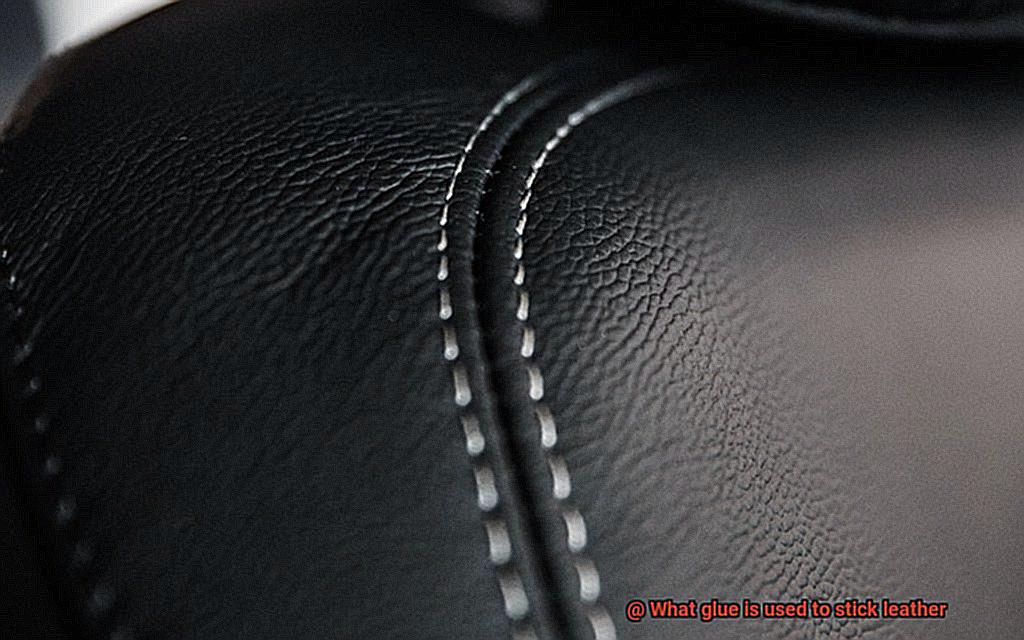
When it comes to bonding leather, choosing the right adhesive is crucial for achieving a strong and durable bond.
Contact cement, epoxy adhesive, polyurethane adhesive, hot glue, and water-based adhesives are all commonly used for leather bonding, each offering unique advantages and suitability for different applications.
Consider factors such as the type of leather and intended use before making your decision.
Contact Cement: A Strong and Fast-Drying Adhesive
When it comes to leather projects, finding the right adhesive is crucial for creating a durable and professional finish. One adhesive that stands out from the rest is contact cement. Known for its strong bond and fast-drying properties, contact cement is a popular choice among crafters, DIY enthusiasts, and professionals working with leather. In this article, we will explore the benefits of using contact cement for leather projects, including its strong bond, fast-drying nature, versatility, durability, easy application, and more.
Strong Bond:
Contact cement creates a chemical bond between the adhesive and the leather surface. This results in a robust and permanent bond that can withstand regular use, bending, and stretching without losing its adhesive properties. Whether you’re working with genuine leather, suede, or faux leather, contact cement provides a reliable connection that holds up over time.
Fast-Drying Nature:
One of the standout features of contact cement is its rapid drying time. Unlike other adhesives that require clamping or curing time, contact cement bonds almost instantly upon contact. This makes it an ideal choice for projects that require quick assembly or immediate use. Simply apply an even coat on both surfaces, let it dry according to the manufacturer’s instructions, and press the surfaces together firmly for a strong bond in no time.
Versatility:
Contact cement is a versatile adhesive that goes beyond bonding leather to leather. It is also suitable for bonding leather to other materials such as wood, fabric, or metal. This opens up a world of possibilities for your leather projects, allowing you to create unique and intricate designs that incorporate different materials seamlessly.
Durability:
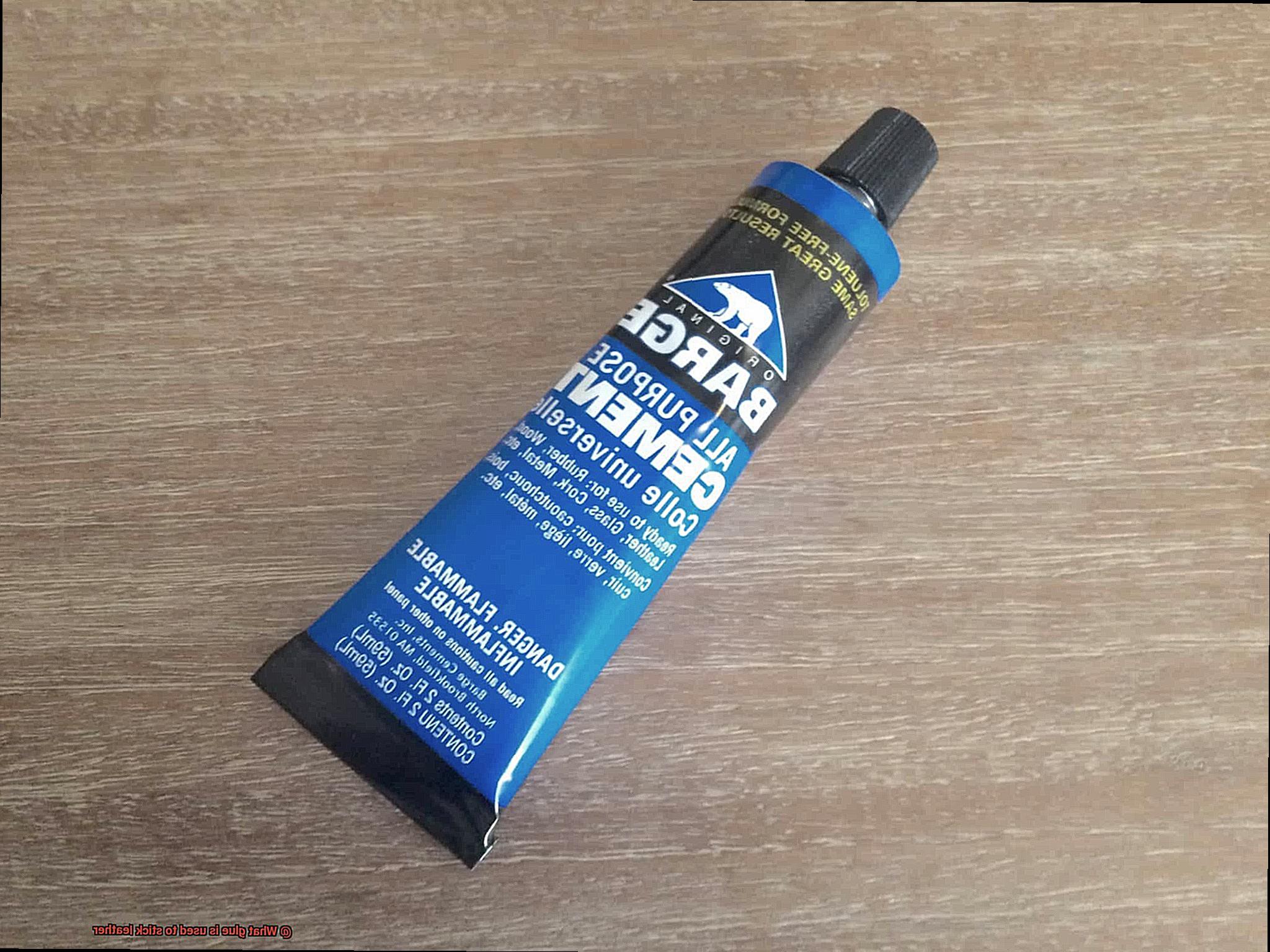
Thanks to its strong bond and high-quality ingredients like neoprene rubber, contact cement provides a long-lasting hold. It can withstand the test of time and regular wear and tear without compromising its adhesive properties. However, it’s important to note that extreme heat or moisture may weaken the bond over time, so proper care and maintenance of your leather projects are necessary.
Easy Application:
Applying contact cement is a breeze. It can be applied using a brush or a roller, ensuring an even coat on both surfaces for optimal bonding. Before application, make sure to prepare the surfaces properly by cleaning them thoroughly to remove any dirt, oils, or residues that could hinder the adhesive’s effectiveness. Following the manufacturer’s instructions for drying time is also essential to achieve the best results.
Epoxy Adhesive: A Two-Part Bonding Solution
In the world of leathercraft, finding the perfect adhesive is paramount. Epoxy adhesive, with its exceptional strength and versatility, has emerged as a popular choice for bonding leather. This article explores the advantages and considerations of using epoxy adhesive as a two-part bonding solution for leather.
Advantages of Epoxy Adhesive for Leather:
- Versatility: Epoxy adhesive is renowned for its ability to bond various materials, including leather. Whether you need to attach leather to another material or join two pieces of leather together, epoxy adhesive provides a reliable solution.
- Strength and Durability: Durability is crucial for leather items that experience frequent stress or tension, such as bags or shoes. Epoxy adhesive offers excellent strength, ensuring a long-lasting bond that can withstand the test of time.
- Resistance to Moisture and Temperature Changes: Leather items may encounter moisture or varying temperatures throughout their lifetime. Epoxy adhesives provide resistance to both, making them suitable for indoor and outdoor applications.
Considerations when Using Epoxy Adhesive on Leather:
- Surface Preparation: Properly preparing the leather surface is crucial for a successful bond. Clean the surface with a mild detergent and water solution to remove any dirt or oils that may hinder adhesion. Lightly sanding the surface creates a rough texture, enhancing the adhesive’s grip.
- Flexibility: Epoxy adhesives can cure into a rigid state, which may affect the flexibility of certain leather items. It is essential to consider the project’s specific requirements before choosing epoxy adhesive as your bonding solution. If flexibility is crucial, explore other adhesive options designed specifically for leather.
Application Tips:
- Follow Mixing Instructions: It is essential to follow the manufacturer’s instructions for mixing the epoxy resin and hardener in the correct ratio. An incorrect ratio can result in a weak bond.
- Even Application: Apply the adhesive evenly to both surfaces that need to be bonded. Ensure full coverage to maximize the strength of the bond.
- Curing Time: Epoxy adhesives typically require several hours to fully cure. Avoid disturbing the bond during this time and allow for proper curing to achieve the desired strength.
Polyurethane Adhesive: Flexible and Durable Bonding Option
Polyurethane adhesive is a flexible and durable bonding option that is perfect for sticking leather. Its versatility and reliability make it a popular choice among professionals and DIY enthusiasts. Let’s dive into the key benefits of this adhesive and why it’s the ultimate option for your leather projects.
Flexibility is essential when it comes to bonding leather. Leather is a material that bends, stretches, and moves, so the adhesive used needs to be able to keep up. With polyurethane adhesive, you don’t have to worry about your leather items falling apart at the seams. It effortlessly accommodates the natural movements of leather without compromising the strength of the bond. So go ahead, stretch that leather bag to fit all your essentials – the bond will hold strong.
Durability is another crucial factor when it comes to bonding leather. Leather items such as shoes, bags, or upholstery face heavy use and wear. But fear not. Polyurethane adhesive is here to save the day. With its high strength and durability, it can handle whatever life throws at it. Dance the night away in those leather boots – the bond won’t let you down.
But wait, there’s more. Polyurethane adhesive also has excellent adhesion properties. It sticks to all types of leather surfaces, whether they’re smooth or textured. So whether you’re working with sleek leather shoes or embossed leather bags, this adhesive has got you covered.
And let’s not forget about water and moisture. We all know that leather and water don’t mix well. But with polyurethane adhesive, you don’t have to worry about your leather items getting soaked. It forms a waterproof bond that protects your beloved leather from moisture damage.
Specialty Glues for Leather Bonding
Look no further. Today, we’re delving into the world of specialty glues for leather bonding. Whether you’re a shoe aficionado, a bag connoisseur, or simply enjoy working with leather, knowing the right glue can make all the difference.
Let’s start with contact cement. This classic glue is perfect for instant bonds that need to be strong and resistant to heat and moisture. Just apply it to both surfaces, let it dry until tacky, and press them together. Voila. You’ve got yourself a tough bond ready to take on the world.
If you’re tackling heavy-duty tasks, epoxy adhesive is your go-to. With its two-component formula, mixing resin and hardener before application, epoxy creates a bond that can withstand chemicals, heat, and moisture. It’s like the Hulk of glues – strong and durable.
But wait, there’s more. Enter polyurethane adhesive, our trusty sidekick. This versatile glue is known for its flexibility and ability to bond a wide range of materials, including leather. It provides a strong bond that can handle heat, chemicals, and moisture. So whether you’re making upholstery or crafting wallets, polyurethane adhesive has got your back.
When selecting the best glue for your leather project, consider the specific type of leather you’re working with. Some glues are designed specifically for suede or nubuck leather while others work better with smooth or full-grain leather. Next, think about the desired bond strength and flexibility requirements. Do you need a super-strong bond for heavy use or flexibility for items like shoes or belts? Lastly, consider the environmental conditions your bonded leather will face.
Remember to always follow the manufacturer’s instructions and conduct a test bond before proceeding with your project. If in doubt, consult a professional or someone with knowledge in the field.
Factors to Consider When Choosing a Glue for Sticking Leather
When it comes to sticking leather, choosing the right glue is essential. It’s like finding the perfect partner for your leather-sticking adventure – someone who will stand by your side through thick and thin, just like a trusty sidekick. So, let’s dive into the factors you need to consider when choosing a glue for sticking leather.
First and foremost, you need to consider the type of leather you’re working with. Leather can vary in thickness, flexibility, and texture, like a diverse group of superheroes. Some glues work better with certain types of leather, so make sure to choose a glue that is compatible with your specific leather type.
Strength and flexibility are crucial factors to keep in mind. Leather items like shoes, bags, or belts go through a lot of wear and tear. You need a glue that can handle the Hulk-like strength required for regular use and movement. Look for glues specifically designed for bonding leather that provide both strength and flexibility.
Drying time is another important factor. Some glues dry faster than Quicksilver, while others take their time like Captain America on a leisurely stroll. Depending on your work process and whether you need to apply pressure or clamp the leather during bonding, choose a glue with a drying time that suits your needs. Timing is everything – you need to know how long you have to reposition the leather before the glue sets like Iron Man in battle.
If you’re planning to use your leather item outdoors or expose it to moisture or varying weather conditions, waterproof and weather resistance become crucial factors. You don’t want your outdoor furniture or shoes to dissolve in the rain like the Wicked Witch of the West. Find a glue that offers adequate protection against water damage and degradation caused by exposure to the elements.
Ease of use is also worth considering. Do you want a glue that comes in a convenient squeeze tube or bottle with an applicator tip? Or do you prefer the challenge of mixing and applying glue with special techniques? Choose a glue that suits your skill level and provides easy application, so you can stick your leather with ease, just like Spider-Man swinging through the city.
Longevity and durability are essential when it comes to gluing leather. You want a bond that can withstand the forces of time and wear. Look for glues known for their durability and resistance to aging, ensuring your leather items remain intact for years to come, like Black Widow’s timeless beauty.
Lastly, let’s not forget about safety. Some glues emit strong odors or contain harmful substances that can be irritating or hazardous. If you’re working in an enclosed space or have sensitivities to certain chemicals, opt for glues labeled as non-toxic or low in volatile organic compounds (VOCs). You don’t want to end up feeling like the Hulk after inhaling toxic fumes.
Testing the Adhesive on a Small Area of the Leather
Gluing leather requires choosing the right adhesive and ensuring it is compatible with the leather you are working with. To avoid potential damage or disappointment, it is essential to test the adhesive on a small area of the leather before applying it to the entire surface. This article explores why testing is important and provides a step-by-step guide to successfully glue leather.
Importance of Testing:
- Compatibility: Different adhesives react differently with various types of leather, so testing helps determine if the adhesive is suitable for your specific leather type.
- Damage Prevention: Gluing the entire surface without testing can lead to irreversible damage or discoloration if the adhesive is not compatible.
- Adhesion Strength: Testing allows you to assess how well the adhesive bonds with the leather, ensuring a strong and long-lasting hold.
Selecting the Test Area:
- Choose an inconspicuous area: Opt for a hidden part of the leather, such as the backside or inside pocket, to minimize visible impact if the adhesive doesn’t work as expected.
- Clean the area: Thoroughly clean the selected area to remove dirt, oil, or residue that may affect adhesion.
Applying and Assessing the Adhesive:
- Follow manufacturer’s instructions: Apply a small amount of adhesive using a brush or cotton swab, following recommended application techniques.
- Drying time: Allow the adhesive to dry completely according to the manufacturer’s instructions.
- Visual inspection: Carefully examine the test area for any signs of discoloration, damage, or poor adhesion.
Interpreting Results:
- No issues observed: If there are no negative effects and the adhesive securely bonds with the leather, it indicates suitability for use.
- Negative effects observed: If discoloration, stiffness, or poor adhesion is noticed, do not proceed with using that adhesive. Explore other options more compatible with your leather type.
V4_EaCHcyNY” >
Conclusion
When it comes to sticking leather, choosing the right glue is crucial.
The perfect adhesive for leather needs to be strong, flexible, and durable. One popular option is contact cement, which creates a permanent bond between leather surfaces.
Another reliable choice is epoxy adhesive, known for its exceptional strength and ability to withstand heavy stress. For more delicate projects, such as repairing small tears or attaching embellishments, you may opt for leather glue specifically designed for these purposes.
Whichever glue you choose, always remember to follow the manufacturer’s instructions for the best results.

